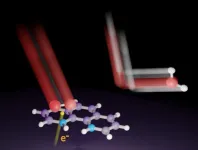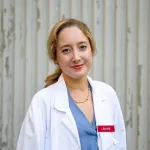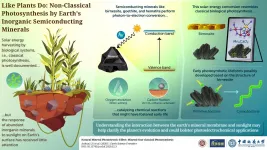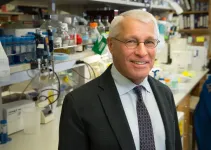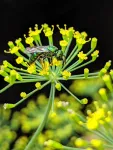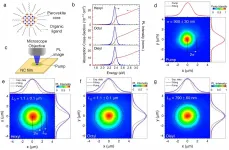Hope for children with rare heart condition: novel stem cell therapy to save the day
Researchers put forward a safe and efficient new stem cell therapy for regenerating cardiac function in pediatric patients
2021-01-12
(Press-News.org) Dilated cardiomyopathy (DCM) is a condition caused by the weakening of the heart muscle, affecting the ventricles (chambers in the heart that push blood around the body as it contracts). If allowed to progress unchecked, DCM can lead to heart failure and death, especially in children. The only cure, at present, is a heart transplant, which comes with its own challenges: long waiting times to secure a suitable donor heart, the possibility of organ rejection, long hospitalizations and recovery times, among others.
In recent decades, stem cells have become the cornerstone of regenerative medicine, allowing medical professionals to treat damaged organs and reverse the course of several diseases that were previously deemed irrevocable. Scientists have turned to "cardiosphere-derived cells" (CDCs), a type of cardiac stem cells known to have beneficial effects in adults suffering from specific heart conditions. By developing ("differentiating") into heart tissue, CDCs can reverse the damage inflicted by diseases. However, little is known about their safety and therapeutic benefit in children.
To address this problem, Professor Hidemasa Oh led an interdepartmental team of scientists at Okayama University, Japan, to launching the first steps to assess this therapy in children suffering from DCM. In a study published in Science Translational Medicine, the team not only showed the effectiveness of CDCs in replenishing damaged tissues in DCM but also revealed how this happens. Prof Oh explains the motivation, "I have been working on cardiac regeneration therapy since 2001. In this study, my team and I assessed the safety and efficacy of using CDCs to treat DCM in children ."
The first step of any trial when testing a new drug or therapy is to use animal models who react similarly to humans, which shows us whether the treatment is safe and has the intended effect. Thus, to begin with, the researchers tested this method in pigs, inducing cardiac symptoms similar to DCM and treating them with different doses of CDCs or a placebo. In those given the stem cell treatment, the scientists noticed quick improvements in cardiac function. The heart muscle thickened, allowing more blood to be pumped around the body. This effectively reversed the damage induced in the pigs' hearts, an encouraging result leading them to progress to small, controlled human trials.
Their phase 1 trial involved five young patients suffering from DCM. The scientists now had a better idea of the suitable dose of CDCs to give their young patients, thanks to the pre-clinical trials in animals. One year after injection, the patients showed no sign of severe side effects from the treatment, but most importantly, there were encouraging signs of improved heart function. The authors are cautious: based on the small population size of their study, they cannot establish a strong conclusion. However, they are satisfied that CDC treatment appears sufficiently safe and effective to progress to a larger clinical trial. As Prof Oh explains, "We intend to move these results into a randomized phase 2 trial to obtain a pharmaceutical approval of this therapy in Japan ."
Another important finding was the mechanism through which CDCs actually lead to improved cardiac function. Indeed, their analyses revealed that transplanted cells secrete small vesicles called "exosomes," which are enriched with proteins called "microRNAs" that initiate a whole cascade of molecular interactions. These microRNA-enriched exosomes have two effects. First, it blocks the damage-inducing cells from causing further harm to the heart tissue. Secondly, it induces the differentiation of stem cells into fully functioning cardiac cells ("cardiomyocytes"), starting the regenerative process. This generates hope that injecting these exosomes alone might be enough to reverse this type of heart damage in patients, bypassing the need for CDCs in the first place.
Looking back on their research, the scientists are hopeful that a phase 2 trial will confirm their suspicions, and what this could mean for future patients. Prospective transplant patients sometimes wait for years for a donor heart to become available. This type of therapy could allow them to live relatively normal lives, and even prevent the need for a transplant altogether for patients who have not yet reached such a critical stage.
INFORMATION:
[Attachments] See images for this press release:
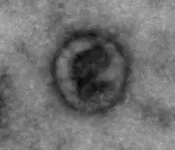
ELSE PRESS RELEASES FROM THIS DATE:
2021-01-12
Tsukuba, Japan - Proton-exchange membrane (PEM) fuel cells are an energy storage technology that will help lower the environmental footprint of transportation. These fuel cells make use of a chemical reaction known as oxygen reduction. This reaction needs a low-cost catalyst for widespread commercial applications. Nitrogen-doped carbon is one such catalyst, but the chemical details of how nitrogen doping works are rather controversial. Such knowledge is important to improving the function of PEM fuel cells in future technologies.
In a study recently published in Angewandte Chemie International Edition, researchers ...
2021-01-12
In a major register-based study, scientists at University of Gothenburg, Sweden, have now demonstrated a connection between inferior physical fitness in young adults and elevated risk of the autoimmune disease psoriasis. For the male recruits to compulsory military training who were rated as the least fit, the risk of developing psoriasis later was 35 percent higher than for the fittest.
The study was based on data on more than 1.2 million men conscripted, aged 18, into the Swedish Armed Forces between the years 1968 and 2005. During the enrollment ...
2021-01-12
Nausea and vomiting symptoms during pregnancy start within a three day timeframe for most women, according to new study from University of Warwick
More accurate measurement achieved by calculating start of pregnancy from date of ovulation - rather than last menstrual period
Points to a potential biological cause for nausea and vomiting, and supports the view that the condition has been trivialised
Researchers from the University of Warwick have narrowed the time frame that nausea and vomiting during pregnancy will potentially start to just three days for most women, opening up the possibility for scientists to identify ...
2021-01-12
Photosynthesis, the process by which plants and other organisms convert sunlight into chemical energy, has been a major player during the evolution of life and our planet's atmosphere. Although most of the ins and outs of photosynthesis are understood, how the necessary mechanisms evolved is still a topic of debate. The answer to this question, however, may actually lie buried in the mineral world.
In a recent study published in Earth Science Frontiers (10.13745/j.esf.sf.2020.12.3), scientists from Peking University, China, shifted the focus in photosynthesis research from plants and bacteria one step further back to rocks and substances found in what's ...
2021-01-12
UK government plans to widen the roll out of the Innova lateral flow test without supporting evidence risks serious harm, warn experts in The BMJ today.
More than £1 billion have been spent on purchasing lateral flow tests, but Professor Jon Deeks and colleagues argue that the public is being misled about their accuracy, as well as the risks and implications of false negative results, and they call on the government urgently to change course.
Mass testing may be helpful and necessary in certain circumstances if delivered to high quality, they explain, but the Innova lateral flow test is not fit for this purpose.
For example, in the Liverpool pilot study, 60% of infected symptomless people went undetected, including 33% of those with ...
2021-01-12
Scientists from the Eli and Edythe Broad Center of Regenerative Medicine and Stem Cell Research at UCLA have developed a technique that will enable researchers to more efficiently isolate and identify rare T cells that are capable of targeting viruses, cancer and other diseases.
The approach could increase scientists' understanding of how these critical immune cells respond to a wide range of illnesses and advance the development of T cell therapies. This includes immunotherapies that aim to boost the function and quantity of cancer or virus-targeting T cells and therapies ...
2021-01-12
EUGENE, Ore. -- Jan. 12, 2020 -- Insufficient interactions with academic advisors and peers and financial problems are derailing career aspirations of women and minority groups pursing graduate degrees in the nation's highest-funded chemistry programs.
The challenges, tied to systemic gender and racial inequities, emerged from a deep analysis of data compiled in a 2013 American Chemical Society survey of 1,375 chemistry graduate students in the top 100 university chemistry departments in terms of research funding reported by the National Science Foundation.
The findings are detailed in a study, led by University of Oregon researchers, publishing this ...
2021-01-12
UNIVERSITY PARK, Pa. -- Wild bees are more affected by climate change than by disturbances to their habitats, according to a team of researchers led by Penn State. The findings suggest that addressing land-use issues alone will not be sufficient to protecting these important pollinators.
"Our study found that the most critical factor influencing wild bee abundance and species diversity was the weather, particularly temperature and precipitation," said Christina Grozinger, Distinguished Professor of Entomology and director of the Center for Pollinator Research, Penn State. "In the Northeastern United States, past trends and future predictions show a changing climate with warmer winters, more intense precipitation ...
2021-01-12
A major risk of being hospitalised is catching a bacterial infection.
Hospitals, especially areas including intensive care units and surgical wards, are teeming with bacteria, some of which are resistant to antibiotics - they are infamously known as 'superbugs'.
Superbug infections are difficult and expensive to treat, and can often lead to dire consequences for the patient.
Now, new research published today in the prestigious journal Nature Microbiology has discovered how to revert antibiotic-resistance in one of the most dangerous superbugs.
The strategy involves ...
2021-01-12
Producing clean energy and reducing the power consumption of illumination and personal devices are key challenges to reduce the impact of modern civilization on the environment. As a result, the surging demand for solar cells and light-emitting devices is driving scientists to explore new semiconductor materials and improve their performances, while lowering the production costs.
Semiconductor nanocrystals (materials with sizes about 10 nanometers, which is approximately 10,000 times thinner than our hair) hold great promise for these applications: they are cheap to produce, can be easily integrated in these devices and possess exceptionally enhanced properties upon interaction with ...
LAST 30 PRESS RELEASES:
[Press-News.org] Hope for children with rare heart condition: novel stem cell therapy to save the day
Researchers put forward a safe and efficient new stem cell therapy for regenerating cardiac function in pediatric patients

